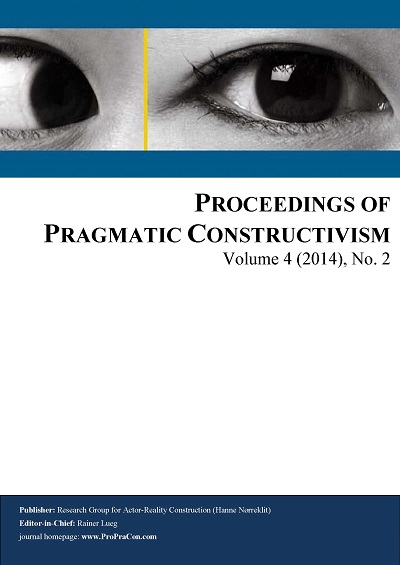Future business models of the library – An actor-based case study at Aarhus Urban Mediaspace
DOI:
https://doi.org/10.7146/propracon.v4i2.20932Keywords:
Pragmatic constructivism, business model innovation, libraryAbstract
Given the changes in the environment, customer demands, and alternative media portals, public libraries are starting to rethink their business models. The purpose of this study is to investigate how business models for public libraries can look in the future. Using pragmatic constructivism as a paradigm, this paper investigates the research question through a case study of the Urban Media space Aarhus (Aarhus Library) with additional comparable data from Aarhus State Library. The empirical data has been collected through interviews with the administrative director of the citizen service center and libraries and with the area director from Aarhus State Library. According to the six types of business models by Henry Chesbrough, Aarhus Library lies between type 5 and 6, which is a company with a quit open business model that has close connections to both partnerships and customers.
The study of these libraries implies that different elements need to be taken into account when defining a business model for public libraries. These elements are customer integration, innovation, and broad collaboration in order to satisfy the diverse customers’ demands. We suggest that future libraries have to be well adapted to changes and be quick at picking up new ideas both from customers and partners and other actors in society in order to cope with the ever changing environment.References
Bock, A. J., Opsahl, T., George, G., & Gann, D. M. 2012. The effects of culture and structure on strategic flexibility during business model innovation. Journal of Management Studies, 49(2): 279-305.
Casadesus‐Masanell, R., & Zhu, F. 2013. Business model innovation and competitive imitation: the case of sponsor‐based business models. Strategic Management Journal, 34(4): 464-482.
Chad, K., & Miller, P. 2005. Do Libraries Matter? The Rise of Library 2.0. White PaperTalis Company; http://www.talis.com/applications/downloads/white_papers/DoLibrariesMatter.pdf.
Chesbrough, H. 2007. Business model innovation: it's not just about technology anymore. Strategy & Leadership, 35(6): 12-17.
Chesbrough, H. 2010. Business model innovation: opportunities and barriers. Long Range Planning, 43(2-3): 354-363.
Chesbrough, H. 2012. Open innovation: where we’ve been and where we’re going. Research-Technology Management, 55(4): 20-27.
Chesbrough, H., & Schwartz, K. 2007. Innovating business models with co-development partnerships. Research-Technology Management, 50(1): 55-59.
Dalby, J., Nielsen, L. S., Lueg, R., Pedersen, L., & Tomoni, A. C. 2014. National culture and business model change: a framework for successful expansions. Journal of Enterprising Culture: forthcoming.
Eriksson, P., & Kovalainen, A. 2008. Qualitative Methods in Business Research. Thousand Oaks, CA: Sage.
Haubro, A. P., Lomholt, H. A., Lueg, R., Nielsen, S. V., & Knudsen., U. 2015. Tactical and strategic choices in business models: evidence from a Danish fashion outlet. Journal of Fashion Marketing and Management: forthcoming.
Jakobsen, M., Johanson, I.-L., & Nørreklit, H. (Eds.). 2011. An Actor's Approach to Management: Conceptual Framework and Company Practices. Copenhagen: DJØF.
Larsen, M. K., Lueg, R., Nissen, J. L., Schmaltz, C., & Thorhauge, J. R. 2014. Can the business model of Handelsbanken be an archetype for small and medium sized banks? A comparative case study. Journal of Applied Business Research, 30(3): 869-882.
Lueg, R., Clemmensen, S. N., & Pedersen, M. M. 2013a. The role of corporate sustainability in a low-cost business model – A case study in the Scandinavian fashion industry Business Strategy and the Environment (forthcoming).
Lueg, R., Malinauskaite, L., & Marinova, I. 2014. The vital role of business processes for a business model: the case of a startup company. Problems and Perspectives in Management, 12(4): 213-220.
Lueg, R., Nedergaard, L., & Svendgaard, S. 2013b. The use of intellectual capital as a competitive tool: a Danish case study. International Journal of Management, 30(2): 217-231.
Malmmose, M., Lueg, R., Khusainova, S., Iversen, P. S., & Panti, S. B. 2014. Charging customers or making profit? Business model change in the software industry. Journal of Business Models, 2(1): 19-32.
Morris, M., Schindehutte, M., & Allen, J. 2005. The entrepreneur's business model: toward a unified perspective. Journal of Business Research, 58(6): 726-735.
Oke, A. 2004. Barriers to innovation management in service companies. Journal of Change Management, 4(1): 31-44.
Pateli, A. G., & Giaglis, G. M. 2005. Technology innovation-induced business model change: a contingency approach. Journal of Organizational Change Management, 18(2): 167-183.
Plé, L., Lecocq, X., & Angot, J. 2010. Customer-integrated business models: a theoretical framework. M@n@gement, 13(4): 226-265.
Sosna, M., Trevinyo-Rodríguez, R. N., & Velamuri, S. R. 2010. Business model innovation through trial-and-error learning: the Naturhouse case. Long Range Planning, 43(2): 383-407.
Yin, R. K. 2014. Case Study Research: Design and Methods (5th ed.). Los Angeles, CA: Sage.
Webpages
https://www.aakb.dk/blog/transformation-lab-prototyping-the-future [Accessed 28. April 2014]
https://www.aakb.dk/in-english [Accessed 18. May 2014]
http://www.aakb.bib.dk/nythb/html/arealforhold.htm [Accessed 13. April 2014]
http://www.b.dk/danmark/bibliotekerne-rammes-af-en-boelge-af-lukninger [Accessed 13. May 2014]
http://lj.libraryjournal.com/2013/07/shows-events/ala/1-million-gates-grant-to-fund-chicago-aarhus-libraries-innovation-partnership-ala-annual-2013/#_ [Accessed 13. April 2014]
http://www.nextlibrary.net/ [Accessed 13. April 2014]
http://www.urbanmediaspace.dk/en/project/facts [Accessed 13. April 2014]
http://www.realdania.dk/filantropiske-programmer/samlet-projektliste/urban-mediaspace-aarhus [Accessed 12. May 2014]
Downloads
Published
How to Cite
Issue
Section
License
Previous and future use of the work
ProPraCon assumes the non-exclusive rights to publish and store the work of its authors, once they have consented to a publication. Since the rights to publish are non-exclusive, authors are free to re-use their work, e.g., to publish it in other media (as ProPraCon aims at publishing proceedings). Hence, it is explicitly allowed that works submitted to ProPraCon may be published in a somehow similar form in other media. Yet, submitting authors warrant that the work is not an infringement of any existing copyright and will indemnify the publisher against any breach of such warranty.
Permissions
By submitting work to ProPraCon, the authors declare that they have permission to use any content that has not been created by them. Specifically, when using tables, figures or excerpts of more than 400 words, it is expected that the authors…
- …obtain written permission of copyright for the use in print and electronic formats of any of their text, illustrations, graphics, or other material, in their work. This includes any minor adaptations.
- …acknowledge the original source in captions and in the reference list.





